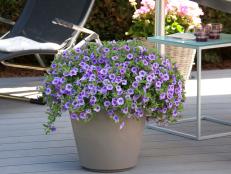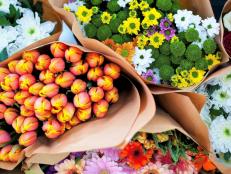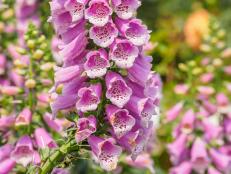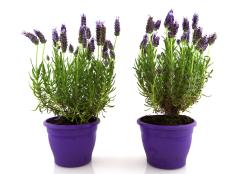Trailing Pansies
Say goodbye to leggy pansies. Trailing types with vigorous, flower-studded stems are great for hanging baskets or as groundcovers.

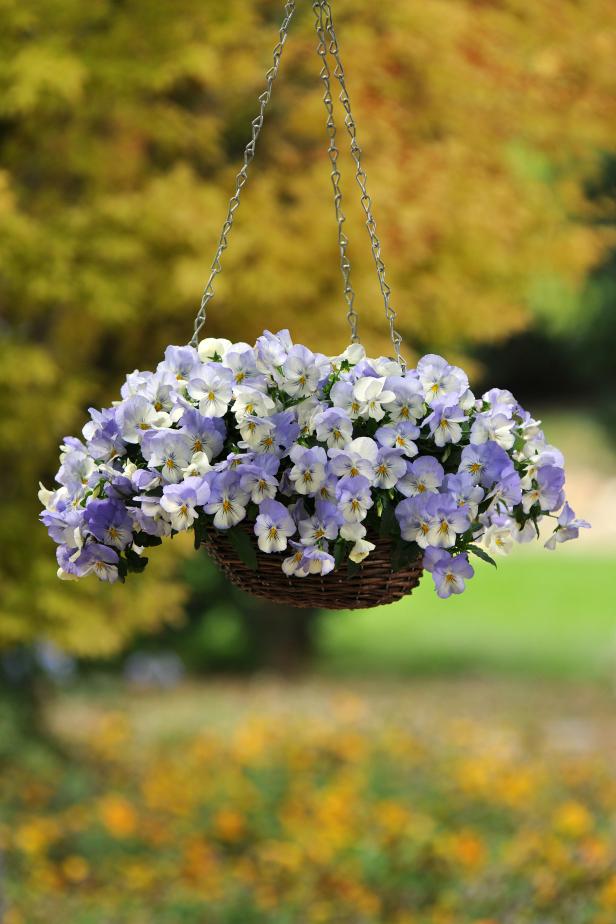
Image courtesy of Ball Horticultural Company
Pansies are a gardener’s go-to plant when the weather is cool. When grown in the fall, they’ll bloom through the winter in some regions. Planted in the spring, they provide lots of early, welcome color.
These hardy plants with cheerful “faces” are typically used in beds and borders, but in 2012, after more than a decade of work, breeders introduced Cool Wave trailing pansies to the market. They've given us a new way to grow some of our favorite flowers: in hanging baskets or as spreading groundcovers.
Other trailing pansies include the WonderFall, Freefall and Plentifall series. They've been developed to produce long, graceful stems with many flowers.
Cool Wave pansies are especially fast-growing, with blooms that measure up to 2 inches across. They take full sun to part shade and moist, well-drained soil. Hardy to USDA zone 5, they’ve shown good resistance to diseases and pests.
The Plentifall pansy series aren’t quite as showy as ordinary pansy blooms: They measure up to 1 1/2 inches across, but they’re bigger than violas and they’re fragrant. These trailing plants grow 6 to 8 inches tall and spread 15 to 18 inches. Like Cool Waves, they’re hardy to zone 5 and prefer full sun.
For a wide range of colors, check out the WonderFall pansy series. Their large blooms come in shades of blue, lavender, rose and purple. According to the breeders, WonderFall pansies cover 75 percent more ground area than ordinary pansies and up to 10 percent more than other trailing types. That means gardeners can plant fewer plants and still get plenty of flower power.
The WonderFall series is recommended for USDA zones 6 to 10. The plants take full sun and grow 6 to 8 inches tall with a 12 to 15 inch spread.
Freefall pansies reach 6 to 8 inches high and measure of 12 to 15 inches across. They're less prone to stretching when the temperatures start to rise. Bred by Floranova, a breeder based in the United Kingdom, they're harder to find in the U.S. than other trailing types.
How to Grow Trailing Pansies
If you’re planting in containers, grow your trailing pansies in potting mix that drains easily. If they’re going in the garden, give them loose, well-drained soil that is slightly acidic, aim for a pH of 5.5 to 6.0. Water when you plant and give the pansies some slow-release fertilizer. Check the label on your product for information on how much to use.
Keep the plants watered as needed until they develop a good root system. Continue feeding with liquid fertilizer every two weeks or until the first frost hits. Wait until the following spring to start fertilizing again.
If you garden in the north, you’ll probably need to mulch your trailing pansies to help them survive the winter. Pine straw or shredded leaves will help insulate them from a deep freeze. When spring arrives remove the mulch and start fertilizing when the plants show signs of new growth.
Tips for Trailing Pansies in Baskets
- Don’t pack them in. A 10- to 12-inch container only needs three Cool Wave pansy plants according to the Wave developers. If you crowd them, they’ll have to compete for nutrients and space to spread their roots. Trailing pansies have been bred to spread out, so let them do their thing.
- Watch the water. Make sure excess water can drain out of your basket so the plant roots don’t rot. But remember that hanging containers are often more exposed to the wind than plants growing in the ground, plus they can dry out faster. In hot climates, you may need to water your trailing plants two times each day. Although it’s fine to let your pansies dry out slightly between waterings, don’t wait until they wilt.
- Bring on the sun. Most trailing pansies can take it and Cool Waves need at least 6 hours of sun each day to produce lots of blooms.







